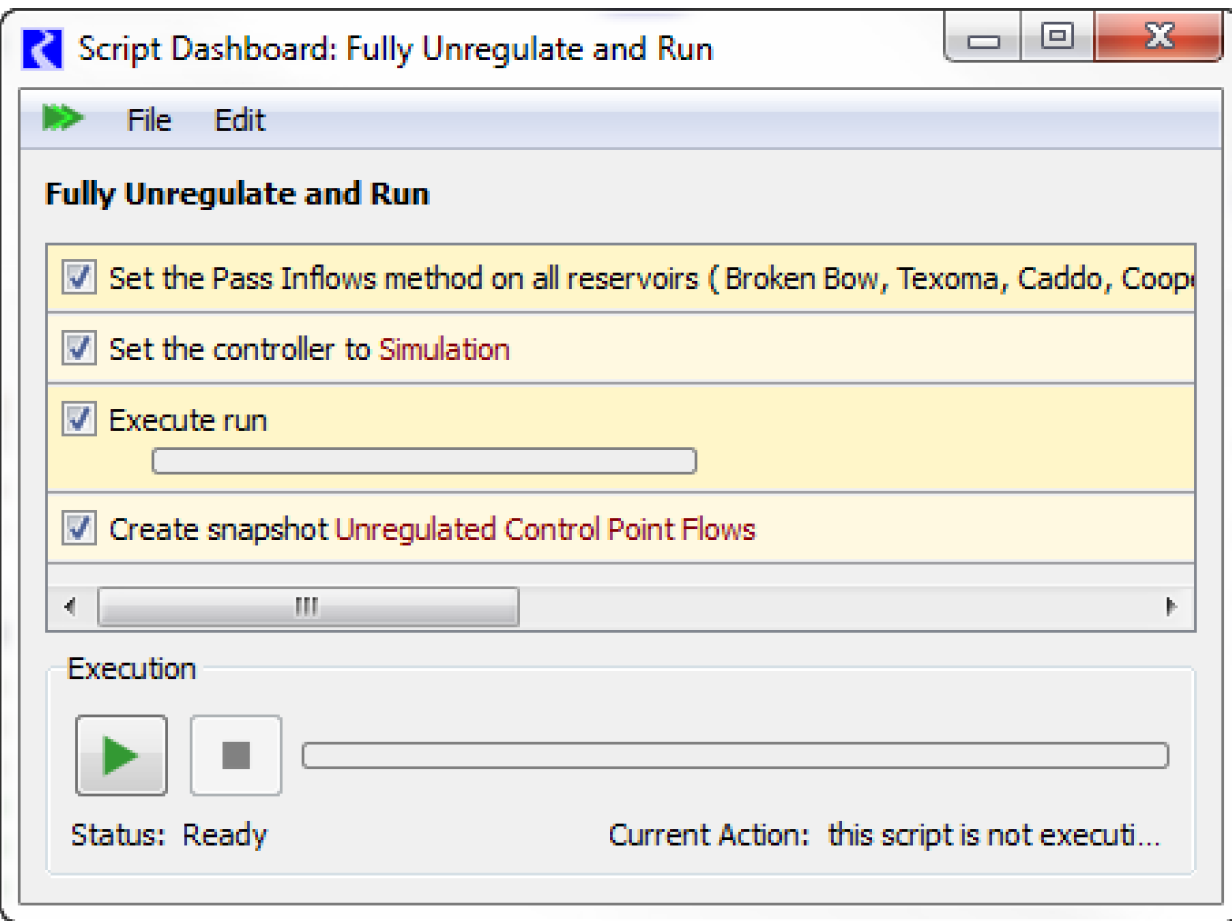Disable Reservoir Processes
This category holds the Pass Inflows method which allows you to disable reservoir processes and pass inflows as though the reservoir wasn’t there.
This is the default, no-action method. When this method is selected all physical processes are enabled and executed as appropriate.
This method disables many of the reservoir physical processes and passes the inflows through the reservoir. This method can be used to temporarily remove the presence of a reservoir and compute flows as though they were unregulated, unconstrained or pre-project.
No Slots are associated with this method.
This method performs the following actions.
• Changes the Workspace Icon. When this method is selected, the icon on the workspace is modified to indicate the Reservoir is passing inflows.

• Enables alternative dispatch method. When this method is selected, only the Solve Pass Inflows dispatch method is available. See Solve Pass Inflows for details.
Computation of Flows for a Fully Unregulated System
To compute the flows at any point in the system without the effect of any reservoir, run two simulations. The first run computes the unregulated flows, the second computes the regulated flows, often using rulebased simulation. Results can be analyzed using snapshots. Simple scripts can be used to modify the system and make the runs. Following is the conceptual approach.
1. Compute unregulated flows by executing a script. See Script Management in Automation Tools for details about scripts.

The Script Dashboard allows you to do the following:
– Set the Pass Inflows method on each reservoir.
– Set the run controller to Simulation.
– Run the model. With the new method, the reservoirs pass inflows (including Hydrologic Inflow and Return Flow) but no other physical processes are made. When the reservoirs dispatch, they will set Outflow =  Inflows, thus propagating the flows downstream.
Inflows, thus propagating the flows downstream.
– Create snapshots of desired slots.
2. You could then look at the results if desired.
3. Compute regulated flows by executing a script that does the following:
– Set the method on each reservoir to its normal regulated mode (None method in the Disable Reservoir Processes category).
– Set the run control to Rulebased Simulation.
– Load the RBS ruleset set if necessary
– Run the model
4. At this point, the regulated results are in the objects and slots. They can be compared with the snapshots from the unregulated run.
This process assumes two scripts in Step 1. and Step 3. These can be combined into one script that fully automates the runs, if desired. With this approach it is easy to run just the regulated system, the unregulated system, or both.
This approach presented assumes that all reservoirs are unregulated. If only a portion of the system is unregulated, you will need to decide how the other reservoirs behave, especially if they are dependent on the disabled reservoir. Additional script actions can be used to disable rules or set values in the system.
See Modeling Unregulated Conditions in USACE‑SWD Modeling Techniques for details on the USACE approach to unregulated conditions.
Revised: 06/04/2022